|
Jazz Essentials, Part 1
Banner year in jazz history is celebrated
By Tom
Ineck
I have been
asked many times over the years to suggest a list of essential
recordings for listeners who want to assemble a basic jazz collection
but don’t know where to begin. Such an enterprise is subjective by
nature, but there are probably 50 or 100 recordings that nearly everyone
acknowledges as classics of the genre.
Beginning
with this edition of the BMF newsletter, my goal is to recommend at
least five classic jazz recordings in each issue. In my opinion, these
belong in any jazz library worthy of the name, which is not to say that
everyone will find them equally compelling. Whenever possible, my
comments will be based on the latest, best edition of the CD in
question.
For the
debut of this column, the five selections virtually chose themselves.
Like the year 1939 in film history, 1959 was a banner year in jazz
history, especially on the Columbia label. As a result, the label’s
Legacy imprint has produced lavish, re-mastered multi-disc packages
celebrating the 50th anniversary of some landmark releases.
The first three CDs below fall into this category—“Kind of Blue,” by
Miles Davis, “Mingus Ah Um,” by Charles Mingus, and “Time Out,” by the
Dave Brubeck Quartet. The other two are equally historic recordings of
that same year, John Coltrane’s “Giant Steps” and Art Pepper’s “Modern
Jazz Classics.” It was a very good year, indeed.
MILES DAVIS
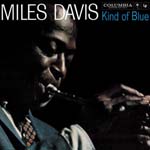 Kind
of Blue (50th Anniversary Edition) Kind
of Blue (50th Anniversary Edition)
Columbia
Legacy Records
The
recording that introduced the world to jazz improvisations based on
simple “modal” chord changes, “Kind of Blue” is as much about moods as
modes. Ranging from slow to mid-tempo and built on mesmerizing, repeated
phrases voiced by trumpeter Miles Davis with typical nonchalance, it
still is a relaxing antidote to the frenetic pace and rapid chord
changes of early bop. Davis’ gifted collaborators on these historic
sessions included saxophonists John Coltrane and Cannonball Adderley,
pianists Bill Evans and Wynton Kelly (on “Freddie Freeloader” only),
bassist Paul Chambers and drummer Jimmy Cobb.
The first
of two discs in this anniversary set contains all of the original
recordings from sessions in March and April 1959, plus an alternate take
of “Flamenco Sketches” and several brief studio sequences. Among these
timeless tunes are “So What,” “Blue in Green” and “All Blues,” which
stretches beyond 11 minutes.
For
listeners already familiar with these classic recordings, the second
disc is the real revelation. It contains five tracks recorded in the
studio nearly a year earlier in preparation for the final sessions,
including the standards “On Green Dolphin Street,” “Stella by
Starlight,” and “Love for Sale,” and two versions of Davis’
“Fran-Dance.” Finally, the Legacy edition adds a 17-minute performance
of “So What,” recorded live in Holland in April 1960 with a quintet
minus Adderley.
In addition
to rare photographs and informative liner notes by jazz critic Francis
Davis, the package contains a digital booklet with an essay,
transcriptions of the session dialog and special commentary.
CHARLES MINGUS
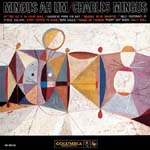 Mingus
Ah Um (50th Anniversary Edition) Mingus
Ah Um (50th Anniversary Edition)
Columbia
Legacy Records
Recorded in
the same 30th Street Studio where “Kind of Blue” was “waxed”
earlier in the year, these four productive sessions of May and November
1959 resulted in two classics, “Mingus Ah Um” and the follow-up, “Mingus
Dynasty,” plus four tracks that were first released on a 1979 LP called
“Nostalgia in Times Square” and three tracks that were later released on
the Mosaic label. At more than 150 minutes, it is a staggering output of
music from THE iconoclastic jazz giant at the height of his powers as
composer, arranger, bassist and bandleader.
The
shifting lineup of the band included Booker Ervin, John Handy, Shafi
Hadi, Benny Golson and Jerome Richardson on reeds, Jimmy Knepper on
trombone, Richard Williams and Don Ellis on trumpets, Horace Parlan and
Roland Hanna on piano, Teddy Charles on vibes and stalwart drummer
Dannie Richmond. Among the immortal tunes they documented are “Better
Git It In Your Soul,” “Goodbye Pork Pie Hat,” “Fables of Faubus,”
“Self-Portrait in Three Colors,” “Open Letter to Duke,” “Bird Calls,”
“Pussy Cat Dues” and “Jelly Roll.” As though to warn—or entice—the
listener, the two-disc package contains the descriptive disclaimer,
“There are shouts and howls on tracks rooted in earthy blues and
gospel.”
This 50th
anniversary edition also offers detailed notes by producer Michael
Cuscuna, rare photographs, and a digital booklet that includes original
album notes, previously unpublished Columbia memos and assorted
correspondences.
THE DAVE BRUBECK QUARTET
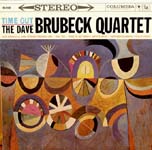 Time
Out (50th Anniversary Edition) Time
Out (50th Anniversary Edition)
Columbia
Legacy Records
The jazz
hit of 1959 was “Time Out,” which contains not only the memorable “Blue
Rondo a la Turk,” the lovely “Strange Meadow Lark” and the whimsical
waltz “Three to Get Ready,” but the first million-selling jazz
instrumental on the Billboard Hot 100, Paul Desmond’s “Take Five.” With
its sophisticated, quirky, yet light-hearted approach, the collection of
original tunes put the Dave Brubeck Quartet—pianist Brubeck, alto
saxophonist Desmond, bassist Eugene Wright and drummer Joe Morello—on
the map.
The
original 38-minute LP sequencing remains intact on the first of three
discs here. Disc two contains nearly an hour of music recorded live in
Newport, R.I., in 1961, 1962 and 1963. In addition to extended versions
of “Blue Rondo” and “Take Five,” it includes the quartet’s unique takes
on the standards “St. Louis Blues,” “Pennies From Heaven” and “You Go to
My Head,” plus Brubeck originals “Waltz Limp,” “Since Love Had Its Way,”
and “Koto Song.” Like the other 50th anniversary Legacy
editions, there are lots of rare photos and new liner notes, here
written by jazz historian Ted Gioia.
A bonus
disc is a DVD featuring an interview with Brubeck on the making of “Time
Out,” an animated photo gallery and an interactive, multi-camera-angle
piano lesson. But don’t expect to play like Dave Brubeck. His unique
style has yet to be matched!
JOHN COLTRANE
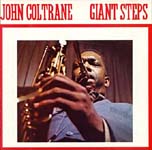 Giant
Steps Giant
Steps
Atlantic
Records
Shortly
after working with Miles Davis on “Kind of Blue,” John Coltrane entered
Atlantic Studios to create his own masterpiece. Primary sessions for
Coltrane’s landmark “Giant Steps” recording were in May and December
1959, and the LP was released in January 1960. The mind-boggling title
track has become a rhythmic conundrum for many musicians who have tried
to match its effusive spirit and odd meter. The date also produced such
classic Coltrane originals as “Cousin Mary,” “Countdown,” “Spiral,”
“Syeeda’s Song Flute,” the haunting love song “Naima” and “Mr. P.C.,” a
tribute to bassist Paul Chambers.
The core
group consisted of tenor saxophonist Coltrane, pianist Tommy Flanagan,
bassist Chambers and drummer Art Taylor, with pianist Wynton Kelly and
drummer Jimmy Cobb sitting in on “Naima.” The alternate takes of “Giant
Steps” and “Naima” that are included in the re-mastered 1990 edition
were recorded in April 1959 with pianist Cedar Walton, Chambers and
drummer Lex Humphries.
With “Giant
Steps,” his first set of all-original material, Coltrane took a giant
leap forward and distinguished himself as a formidable composer,
arranger and bandleader. Jazz fans already knew he could play the horn.
The 1990
pressing contains five alternate takes, but is an otherwise modest
package that recycles the original liner notes by jazz critic Nat
Hentoff, who writes, “What makes Coltrane one of the most interesting
jazz players is that he’s not apt to ever stop looking for ways to
perfect what he’s already developed and also to go beyond what he knows
he can do.”
ART PEPPER + ELEVEN
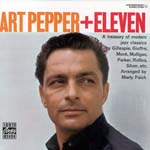 Modern
Jazz Classics Modern
Jazz Classics
Contemporary Records
Not the
household name that Miles, Mingus, Brubeck and Coltrane have become,
alto saxophonist Art Pepper is, nonetheless, a major figure in jazz
history, and “Modern Jazz Classics” is one of his finest hours. To some
extent, it picks up where Miles Davis’ “Birth of the Cool,” let off a
decade earlier, employing a large, brassy ensemble and complex
arrangements in a bold refinement of an earlier, more informal bop
style. It even begins with the same tune that kicked off the 1950 Davis
classic, Denzil Best’s infectious “Move.”
Recorded in
March and May 1959, “Modern Jazz Classics” features 12 tracks, including
wonderful reinterpretations of such modern jazz standards as Dizzy
Gillespie’s “Groovin’ High” and “Shaw ’Nuff,” Horace Silver’s “Opus de
Funk,” Thelonious Monk’s “’Round Midnight,” Jimmy Giuffre’s “Four
Brothers,” Gerry Mulligan’s “Walkin’ Shoes,” Lieber and Stoller’s
“Bernie’s Tune,” Sonny Rollins’ “Airegin,” and Charlie Parker’s
“Anthropology” and “Donna.”
In addition
to Pepper’s own inspired playing, the recording’s classic status can be
attributed to the superb Marty Paich arrangements, which evoke great
performances from a West Coast band of thorough professionals, even
though they are virtually devoid of “star power.” Among them are
trumpeters Pete Candoli, Jack Sheldon, and Al Porcino, trombonist Dick
Nash, saxophonists Bob Enevoldsen, Herb Geller, Bud Shank, Charlie
Kennedy, Bill Perkins, Richie Kamuca and Med Flory, pianist Russ
Freeman, bassist Joe Mondragon and drummer Mel Lewis.
A Japanese
re-mastered pressing of "Modern Jazz Classics" was released in 1998 and
contains three alternate takes and original liner notes by Hentoff.
top |

 Kind
of Blue (50th Anniversary Edition)
Kind
of Blue (50th Anniversary Edition) Mingus
Ah Um (50th Anniversary Edition)
Mingus
Ah Um (50th Anniversary Edition) Time
Out (50th Anniversary Edition)
Time
Out (50th Anniversary Edition) Giant
Steps
Giant
Steps Modern
Jazz Classics
Modern
Jazz Classics